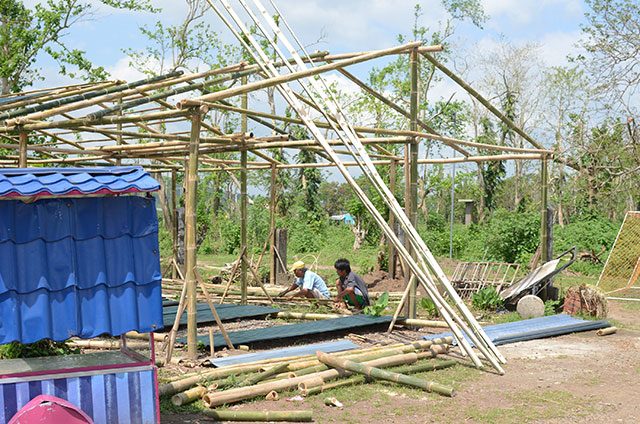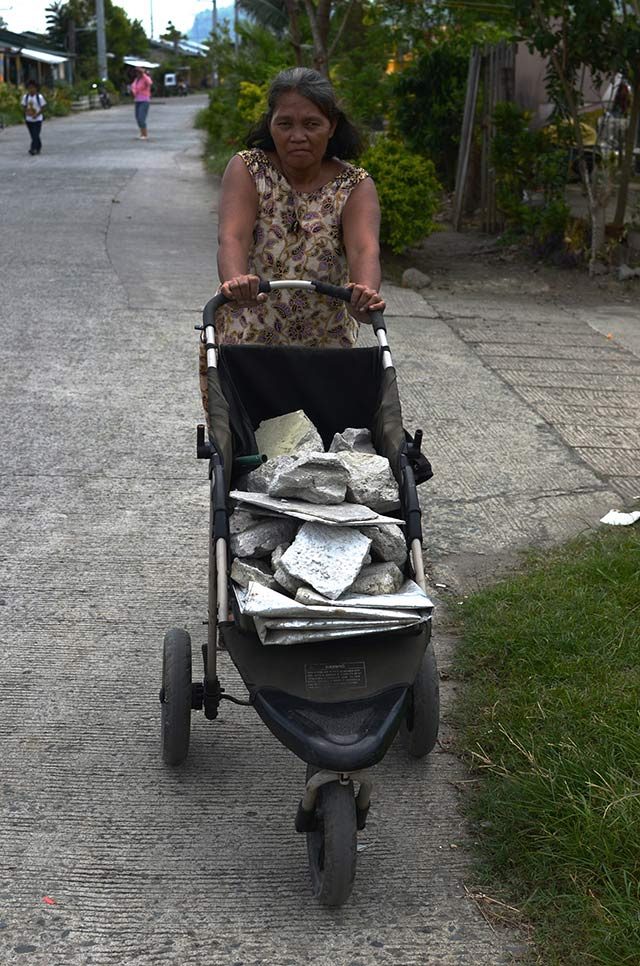SUMMARY
This is AI generated summarization, which may have errors. For context, always refer to the full article.

MANILA, Philippines – When Typhoon Glenda crossed the Philippines on July 16, at winds of up to 250km/h, Jessica Briboneria, 26, hid in her toilet as the wind ripped her house apart.
“The wind started to blow hard at 11 pm everyone was completely scared. We could hear people calling for help but it was hard to help them because of the blackout,” Briboneria explained as she pointed to the shell that was once her house.
“When the typhoon hit, it tore apart the roof. We were hiding in the front, then transferred to the kitchen and then finally transferred to the toilet where we were locked in. The next day my sister had to help us get out. It was very scary,” she added.

Now Briboneria and her 3-month-old child, are homeless again, an all too familiar feeling for them.
Since 2009 the relocation site also welcomed victims of Typhoon Ondoy (Ketsana) and more recently, Typhoon Yolanda (Haiyan). In total the site has 5,544 houses.
Homeless again
Again homeless, Briboneria has been forced to move to an empty lot nearby which the owner, who is usually based in Manila, has recently reclaimed.
“Now we’re just begging them to stay for 3 months while our house gets rebuilt,” said Briboneria.
According to NHA figures, the typhoon completely damaged 339 units where the roof and walls had completely collapsed. Partially damaged units totaled 1,203 – galvanized iron sheets were torn off, fire walls collapsed, some needed vulca seals to patch holes on their roof. There were no injuries or casualties.
“Many of these houses are made from substandard materials so it’s very easy for them to be torn apart,” said Susan Pullarca, a resident volunteer at the site.
According to Briboneria, what made matters worse was the looting in the days following the typhoon.
“People were taking what they could from the destroyed houses such as all the galvanized sheets and metal and even belongings inside the houses. Many people had to go work in Manila so they couldn’t protect their house,” she said.

The NHA, which owns the lots, moved the families temporarily to the unoccupied units. Companies such as ABS-CBN and Habitat for Humanity have committed to rebuild the houses, which will take 3 months, according to residents.
The typhoon also destroyed a number of communal buildings such as the two-story Alternative Learning Center built by Sun Life Financial Philippines, that was inaugurated just last April. The newly-built church and school also saw damage to their roofs.
Better, worse neighborhoods
The land in Southville 7 is divided into different housing settlements with rows of houses donated by different private companies and NGOs such as San Miguel Corporation, ABS-CBN, and Habitat for Humanity.
While the majority of the relocation site was spared, some areas received the brunt of damage.
Minerva Alvarado, a former settler from Paco, lives in one of the most damaged neighborhoods and one of the poorest neighborhoods of Southville 7. According to Alvarado, when they were relocated there from Paco and Pasig, the NHA gave them lots of land only and they were expected to build their houses themselves. Because of the makeshift material their houses were made from, over 100 houses collapsed during the typhoon.
“My house just completely collapsed. My mother and child were hiding in the toilet. I wasn’t there, I was working in Manila. My mother still has nightmares about it,” said Alvarado.
“NHA told us to transfer to vacant units and we’re still asking for help the rebuild the houses. We were told we’re not a priority since we built the houses ourselves,” she added.
Most of Alverado’s neighbors are fellow informal settlers from Paco who make, on average, P300 a day as street vendors selling cigarettes and food in Manila. Alverado said making enough to just eat is already hard from them. It will be even harder to rebuild. – Rappler.com
Add a comment
How does this make you feel?
There are no comments yet. Add your comment to start the conversation.